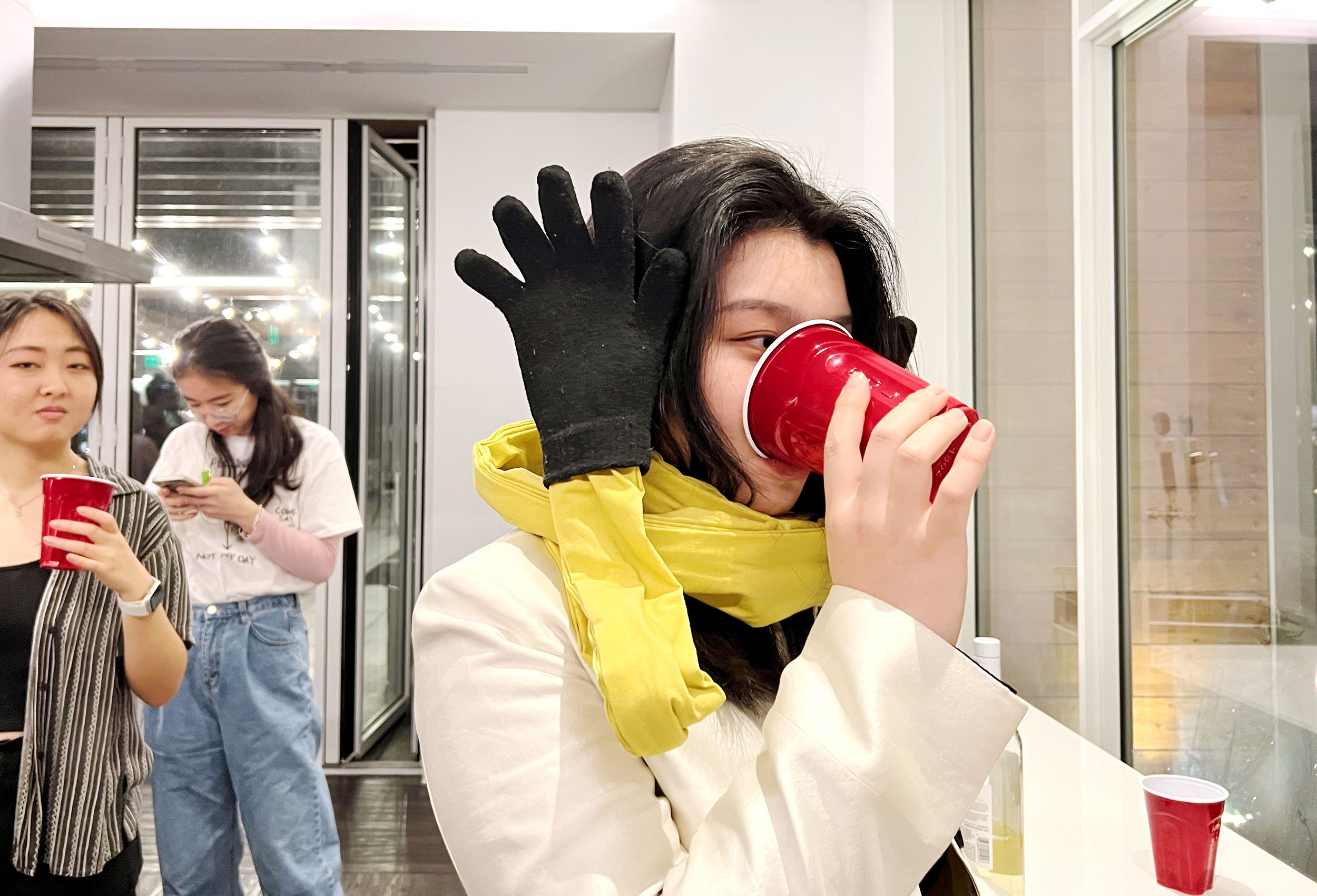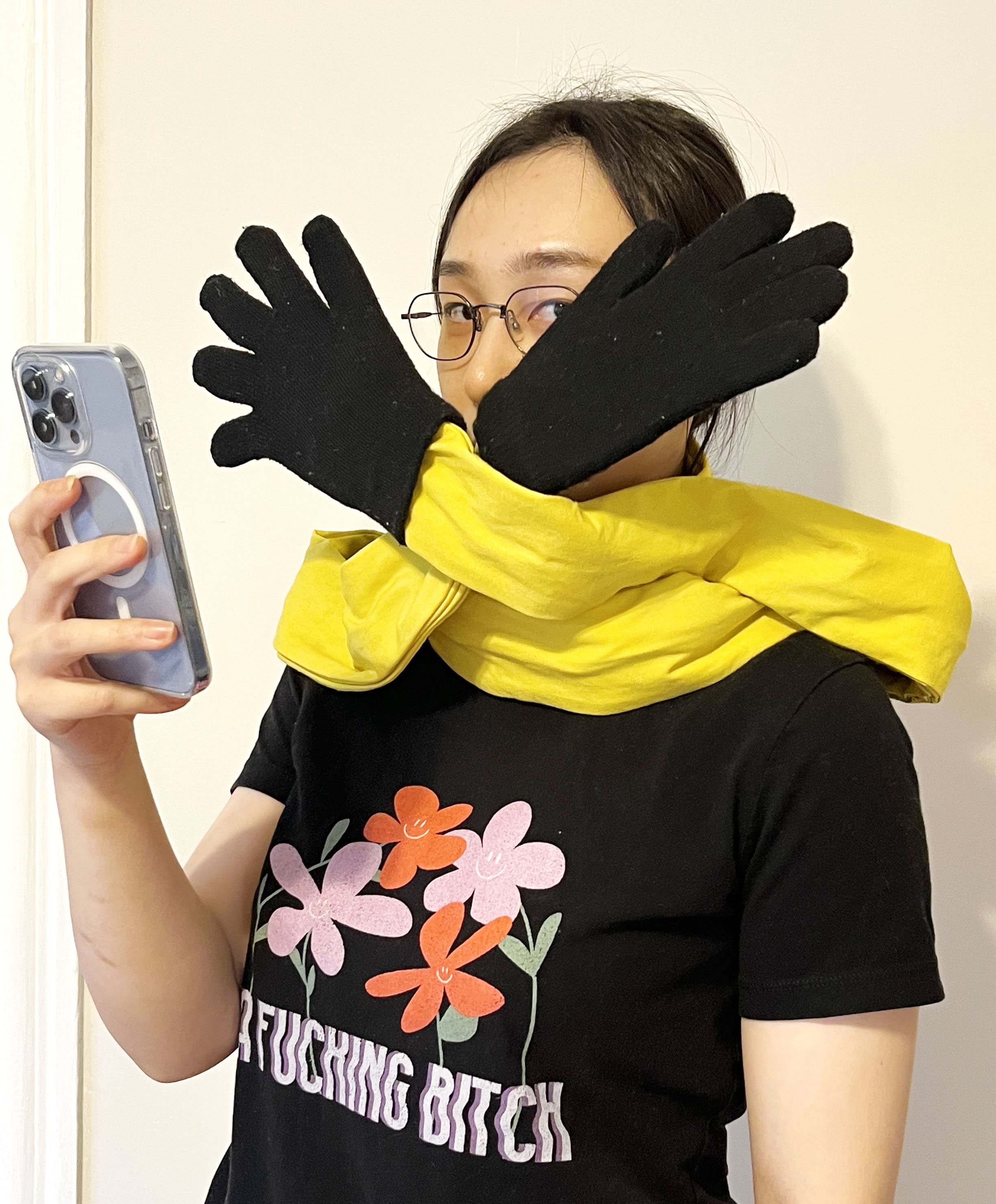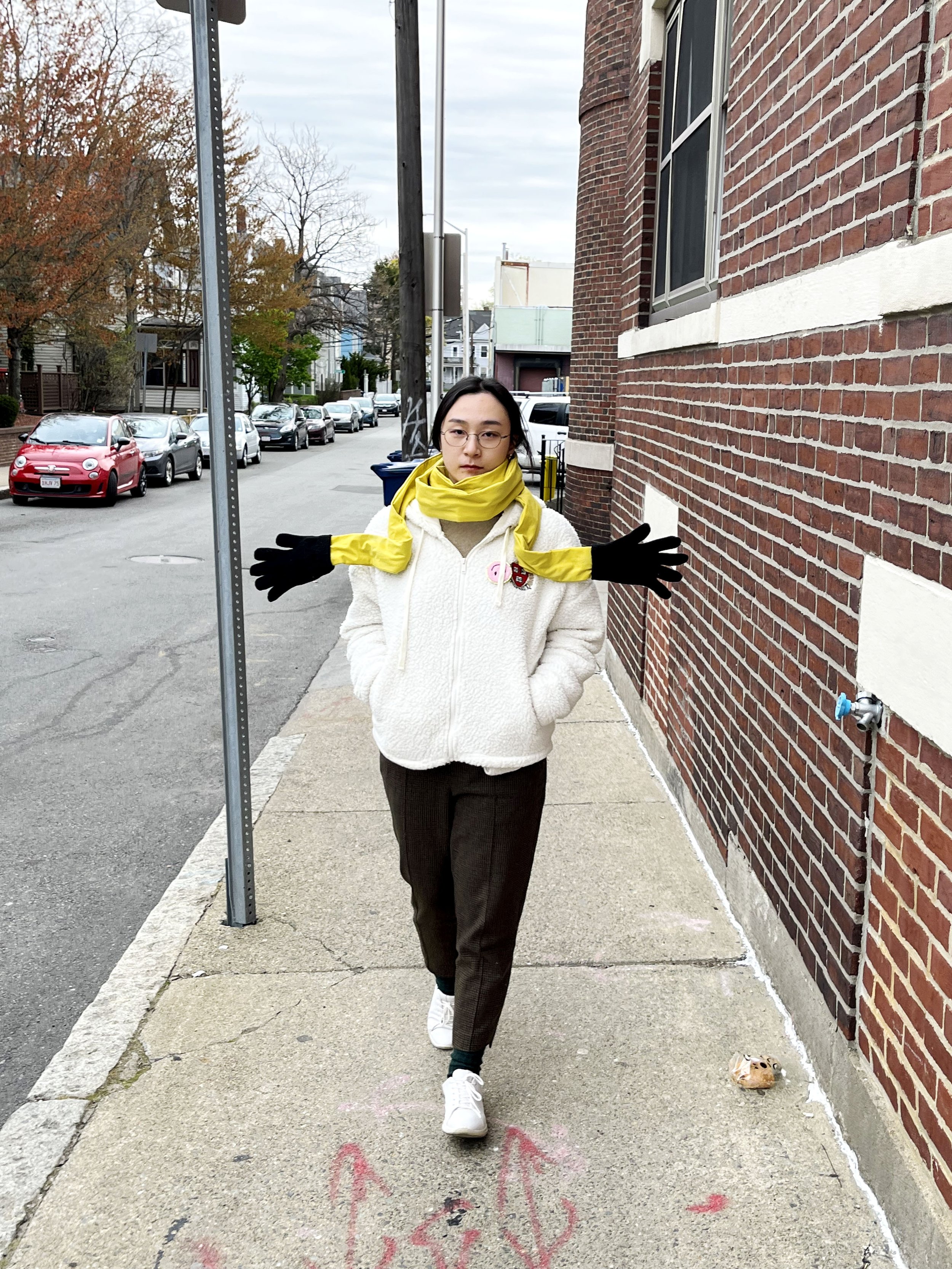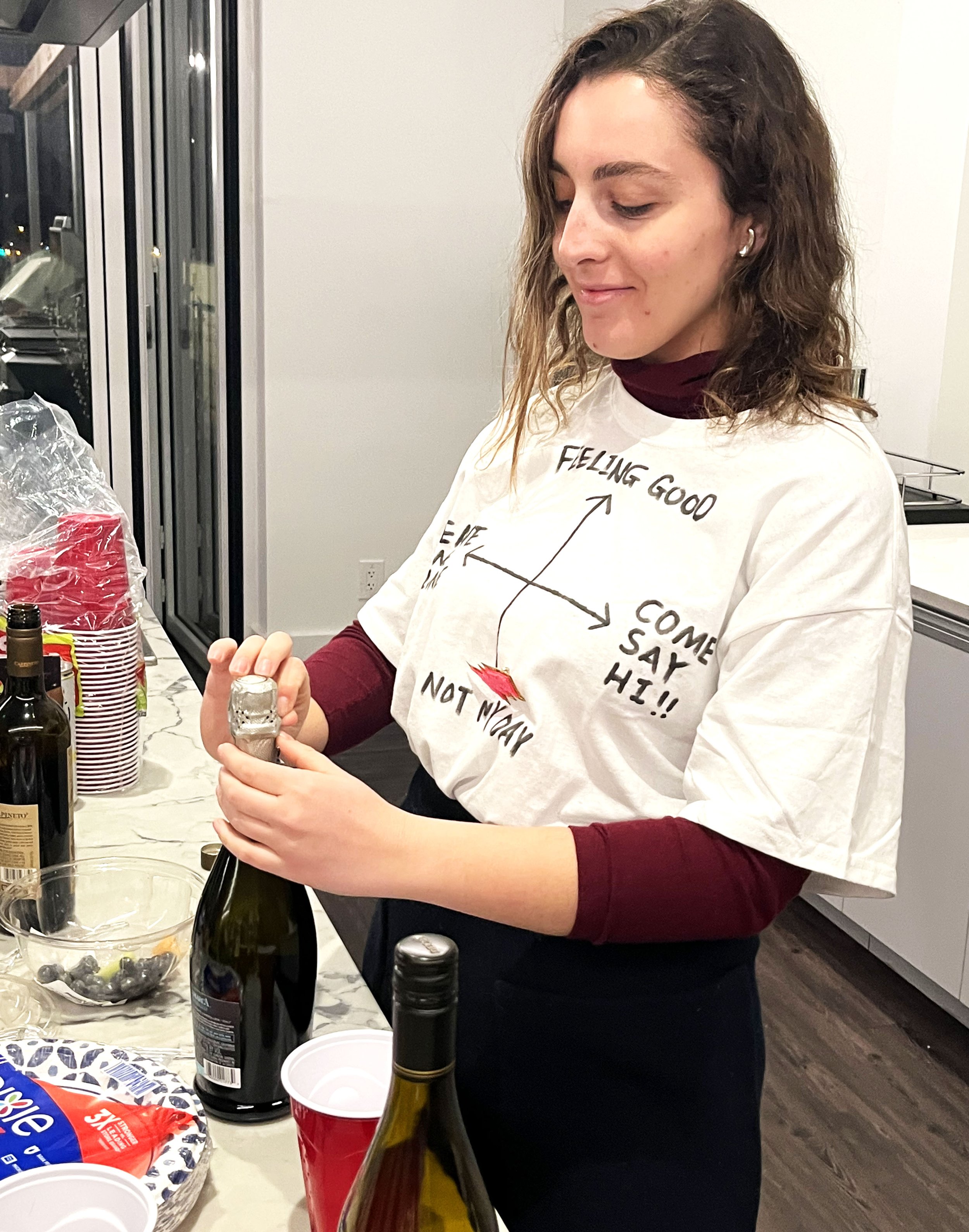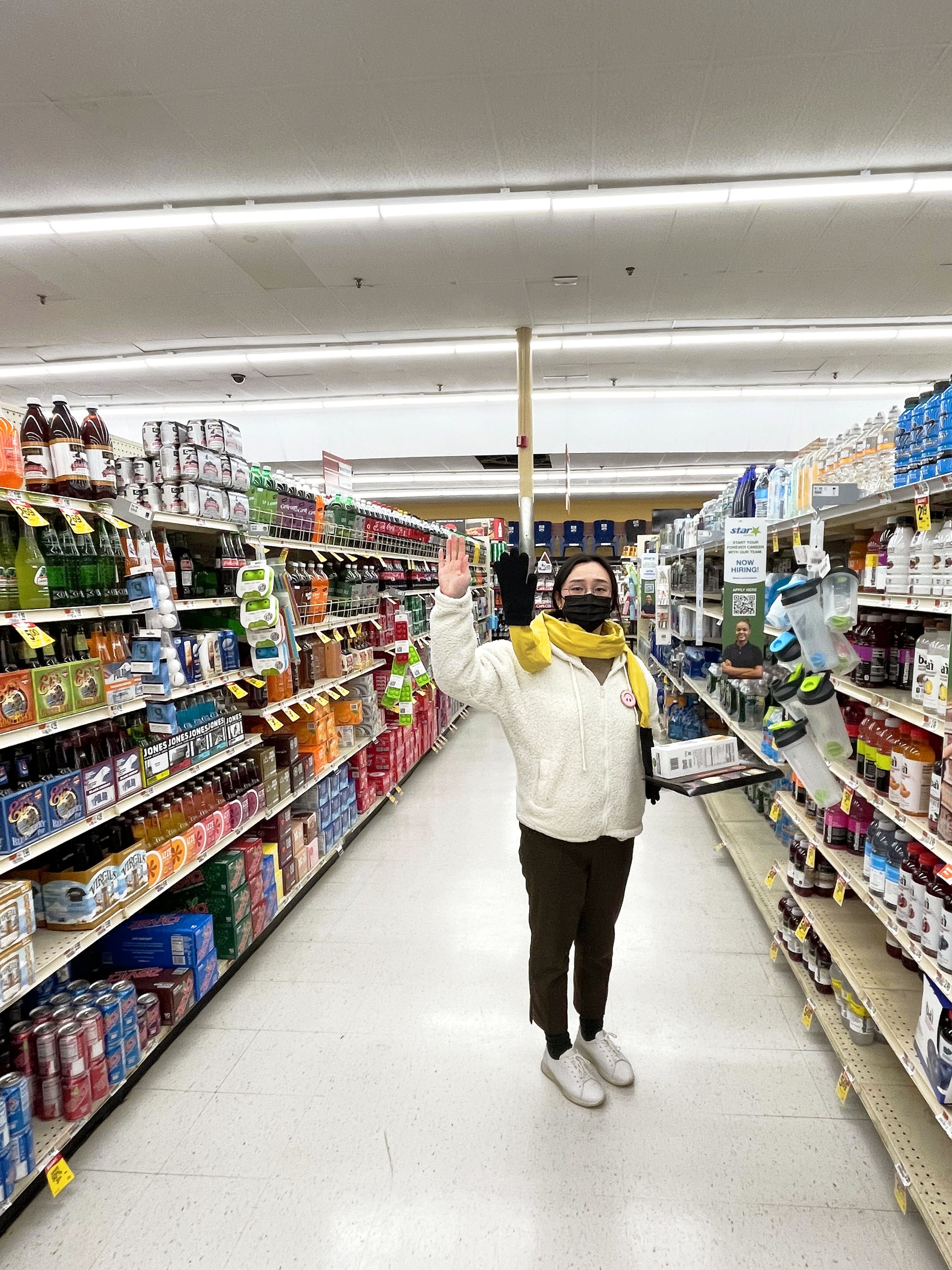Come Closer (or not)
Come Closer (or not) is a set of socially adaptive wearables that help users express their openness to social engagement in public spaces. The first object features a graphic T-shirt which allows the wearer to indicate whether they want to socialize by moving a pin around the axis on the shirt. The second object is a ridiculously long scarf with expressive hands that can be sculpted to express various social attitudes on behalf of its wearers.
We took inspiration from disability studies to rethink how the social etiquette of greeting can facilitate or deter human interaction and relationship building in public spaces.
I. Rethinking the Physics of Greeting
Our project started with an interest in how modern greeting conventions such as handshakes, hugging, and kissing on the cheeks can be inaccessible to people with limited range of motion and body strength. Since the COVID-19 pandemic, people have naturally adopted using elbow bumps and other no-contact greetings to replace handshakes for sanitary purposes. Outside of western civilization, different communities around the world also developed various body gestures for greeting.
By bringing disability into the conversation, we wonder whether there is a way to facilitate greeting without relying on the physical limitation of the human body? For people who are non-verbal or have restricted mobility and muscle strength, what the ways to include them in a greeting culture that does not conform to the able-bodied norms?
II. Rethinking the Psychology of Greeting
Not all of us want to be involved in social interaction all the time. Sometimes, we have a long day and do not want to spend more energy on chitchats, but we might be too polite to say No. Other times, we just don’t want to be bothered and would like to be left alone. Many times, people with visible disabilities often need to deal with unwanted attention in public, such as strangers breeching their privacy by taking photos of them without consent or offering unsolicited help. Similar unwanted attention applies to people who are trans, gay, or identify with any marginalized or minority groups.
These unwanted attentions made us question: how do we communicate the ranges of human emotions and social readiness in a design object? How do we address the challenge of communicating the unspeakable desire to be not greeted and left alone?
Our research process highlighted several relevant projects (see below). Specifically, the gender queer pin from an Etsy store caught our eyes: the wheel design highlights the full spectrum of gender identities beyond the binary, while the rotatable pin allows the wearer to adjust where it points based on self-identification, emphasizing gender fluidity and one’s agency over their identity.
Therefore, we wanted to develop a pair of design objects that (1) rethink the medium of greeting beyond one’s corporeal body, and (2) offer variations in options for the users to engage in social interaction or decline any interaction.
Come Closer (or not) is created to include the graphic T-shirt, which offers a more practical and DIY-able solution to visually map out one’s social energy. With a simple cloth pin, the wearer can alternate between different pin design based on their mood and move it around the coordinates as seem fitted.
Design draft for the T-shirt in Come Closer (or not)
On the other hand (no pun intended), the long scarf with hands offers a speculative musing on alternative solutions to invite or deter social interaction. While it may seem too ridiculous to be socially appropriate, who gets to define social propriety anyway?
If COVID-19 prompted us to normalize no-contact greeting, why can’t we adopt accessories as extensive prosthesis of our bodies to serve the exact same purposes?
Design draft for the scarf in Come Closer (or not)
Here are some more photos of humans wearing the T-shirt and the scarf in public. Which one would you choose to greet or not greet on your behalf?
A project by Snow Xu & Xiaoji Zhou (alphabetically)
Created in Sara Hendren’s Investigating Normal: Assistive and Adaptive Design for Interdependent Futures course at Harvard GSD in Spring 2022









